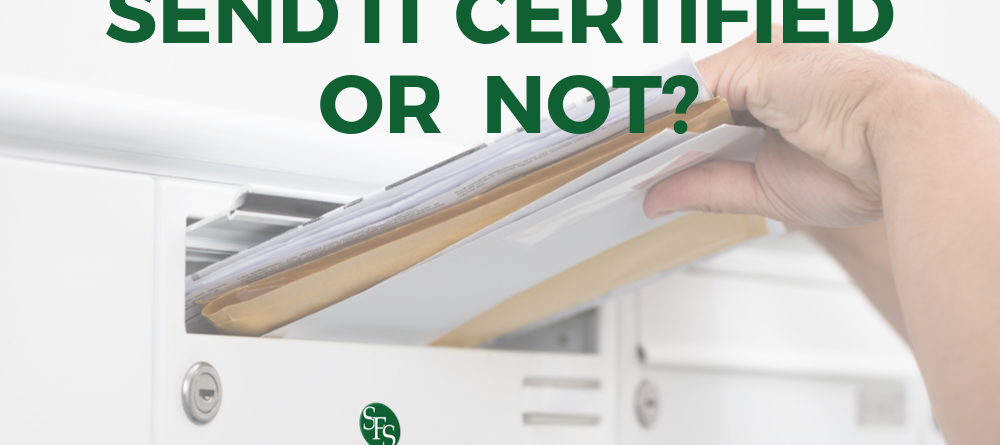Hello Fellow Taxpayers,
September 6, 2019 – Is certified mail the way to go?
My instruction letter to our clients recommends that when documents need to be mailed (including a check for payment of taxes with a return or a tax deposit), they should be sent via certified mail, return receipt (CRRR). Why? This way, you have absolute proof that it was mailed even if the IRS loses it. And as absurd as that may sound, it happens. More often than not, it is the USPS that loses the mailed envelope (no, that never happens :))
So what happens if you do not send it certified and the IRS does not have a record of it?
Common-Law Mailbox Rule
There is a rule, called the “common-law mailbox rule” which was developed to determine whether and when a return was filed, short of direct evidence of physical delivery to the IRS (i.e., certified mail). Under this rule, the courts have held that proof of proper mailing of a return or other tax document, including “by testimonial or circumstantial evidence, established a rebuttable presumption that the return or other document was delivered to the IRS within the time such a mailing would ordinarily arrive.”
So what does this legal mumbo-jumbo mean? In a recent district court case, which he taxpayer won (then lost in the 9th circuit, which is out west), the taxpayer offered the testimony of two of their employees who deposited an amended return in a mailbox at a local post office prior to the expiration date to get a refund (three years from the due date of the return or 2 years from when the tax was paid). The district court held that under the common law mailbox rule, the taxpayers’ amended return was filed timely and they were entitled to the refund that the IRS denied.
Now you noticed, I said that they eventually lost when the IRS appealed to the 9th Circuit Court of Appeals. They lost because this court said the district court could not hear the case (no jurisdiction) because the claim for refund was late as the subsequent filing was made two years after the due date. So why was not the common law mailbox rule followed here, not sure as that argument was not addressed?
Certified Mail
Moral of the story, send important mail via CRRR so that you do not have to rely on a judge’s opinion (or judges in the case of a Court of Appeals) to decide if you are correct or not.
So until next time,
CYA
Jeffrey “Always Mail Things Via CRRR” Schneider


